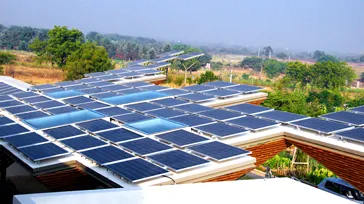 Contact us
Contact usIntent
Community
Studio Organo Concepts
About Us
Subsidaries
Studio Organo
TS RERA No.P02400003403.
TS RERA No.P02400003403.

More than 80% of electricity in India is generated by thermal power plants which include fossil fuel, biomass and nuclear energy. These power plants are projected to consume about 9% of all freshwater resources in the next few decades in India.


For every kWh (1 unit) of energy consumption, freshwater withdrawal is 18.9 liters out of which 2.2 liters is consumed. This is on an average with some power plants being more efficient and some being far worse.
What this translates to is water consumption of around 51 liters per day for the amount of energy that a typical 3-bedroom villa consumes. That is the water footprint for energy consumption.

Reference: International Renewable Energy Agency & World Resources Institute. (n.d.). Water Use In India’s Power Generation: Impact of Renewables and Improved Cooling Technologies to 2030. IRENA.
World Resources Institute. (2018, January). PARCHED POWER: WATER DEMANDS, RISKS, AND OPPORTUNITIES FOR INDIA’S POWER SECTOR (No. 1). WRI.
https://wri-india.org/resources/publications/parched-power
Some other disadvantages are the quality of water that is put back into the freshwater resource and the negative effects of high temperature water on the biodiversity in these freshwaters.
One straight-forward way in which our energy footprint can be reduced is by using solar panels which do not have as much water during their operations as a thermal power plant. Whatever water is consumed is due to regular cleaning of the panels which is required to maintain the efficiency of power generation.

